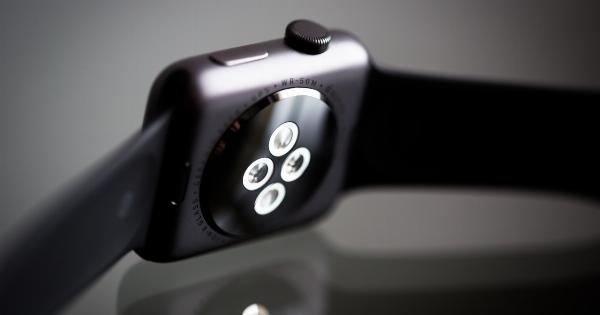Wearable devices have become increasingly popular in recent years, with millions of people tracking their fitness, sleep patterns, and overall health using smartwatches, fitness trackers, and other wearable gadgets.
These devices provide users with valuable data about their health and activity levels, but can they also help to lower health insurance costs? In this article, we will explore the potential impact of wearable devices on health insurance premiums and whether they truly have the ability to lower costs for users.
What are wearable devices?
Wearable devices, also known as wearables, are electronic devices that can be worn on the body or attached to clothing. They are designed to collect data and provide users with useful information about their health, fitness, and lifestyle.
Some of the most popular wearables include smartwatches, fitness bands, heart rate monitors, and sleep trackers.
The benefits of wearable devices
There are several benefits to using wearable devices for tracking health and fitness. Firstly, they provide users with real-time data about their activity levels, heart rate, calories burned, and sleep patterns.
This information can help individuals make more informed decisions about their lifestyle, exercise habits, and overall health. Wearables can also serve as motivational tools, encouraging users to meet their fitness goals and maintain a healthy lifestyle.
Furthermore, wearable devices can help identify potential health issues early on. For example, an irregular heart rate or significant changes in sleep patterns could signal underlying health conditions that require medical attention.
By monitoring these factors, wearables can help users take proactive measures to address any potential health concerns.
Another benefit of wearable devices is their ability to connect with other health apps and medical devices. Many wearables can sync with smartphones or other devices to provide a more comprehensive overview of an individual’s health.
This integration allows for a seamless collection of data and enables healthcare professionals to access accurate and up-to-date information when providing medical care.
The potential impact on health insurance costs
It is widely believed that wearable devices have the potential to lower health insurance costs. Proponents of this idea argue that wearables can promote a healthier lifestyle, leading to a reduction in medical expenses.
By encouraging individuals to exercise regularly, stay active, and maintain good overall health, wearables can potentially prevent the onset of chronic diseases and reduce the need for costly medical treatments.
Insurance companies recognize the potential benefits of wearables and have started incorporating them into wellness programs and initiatives.
Some insurers offer discounts or incentives to policyholders who achieve certain health-related goals or milestones using their wearable devices. By rewarding individuals for maintaining a healthy lifestyle, insurers hope to minimize their financial exposure and create a win-win situation for both the insurer and the insured.
The skeptics’ viewpoint
Despite the potential benefits, there are skeptics who question the impact of wearable devices on health insurance costs. One argument is that wearables mainly attract individuals who are already health-conscious and proactive about their well-being.
In this case, the use of wearables may not necessarily result in significant improvements in overall health or a reduction in healthcare expenses, as these individuals are already taking steps to manage their health effectively.
Another concern is the accuracy and reliability of the data collected by wearables.
Critics argue that the data generated by these devices may not always be accurate or comprehensive enough to provide an accurate assessment of an individual’s health. Inaccurate data could potentially mislead users, giving them a false sense of security or unnecessary worry about their health status.
Furthermore, the cost of wearable devices can be a barrier for some individuals. While prices have come down in recent years, many wearable devices still require a significant upfront investment.
This cost may deter those who could potentially benefit the most from using wearables, such as individuals with lower incomes or those who are at a higher risk of developing chronic conditions.
The future of wearables and health insurance
As technology continues to advance and wearables become more sophisticated, their potential impact on health insurance costs may continue to evolve.
Research is ongoing to determine the effectiveness of wearables in improving health outcomes and reducing healthcare expenses.
Wearable devices could play a vital role in the future of healthcare by enabling remote patient monitoring and providing valuable insights for preventive care.
Real-time data collected by wearables can help healthcare professionals detect early warning signs, intervene promptly, and provide personalized care to individuals with chronic conditions.
Conclusion
While the impact of wearable devices on health insurance costs is still a topic of debate, there is evidence to suggest that wearables can promote a healthier lifestyle and potentially reduce medical expenses.
By incentivizing individuals to stay active and maintain good overall health, insurers and policyholders alike may benefit from lower healthcare costs in the long run.
Wearable devices, with their ability to track and provide valuable health data, have the potential to revolutionize the healthcare industry and improve patient outcomes.
However, it’s essential to consider the limitations of wearables, such as data accuracy and accessibility, as well as the economic barriers that may prevent certain individuals from utilizing these devices effectively.





























